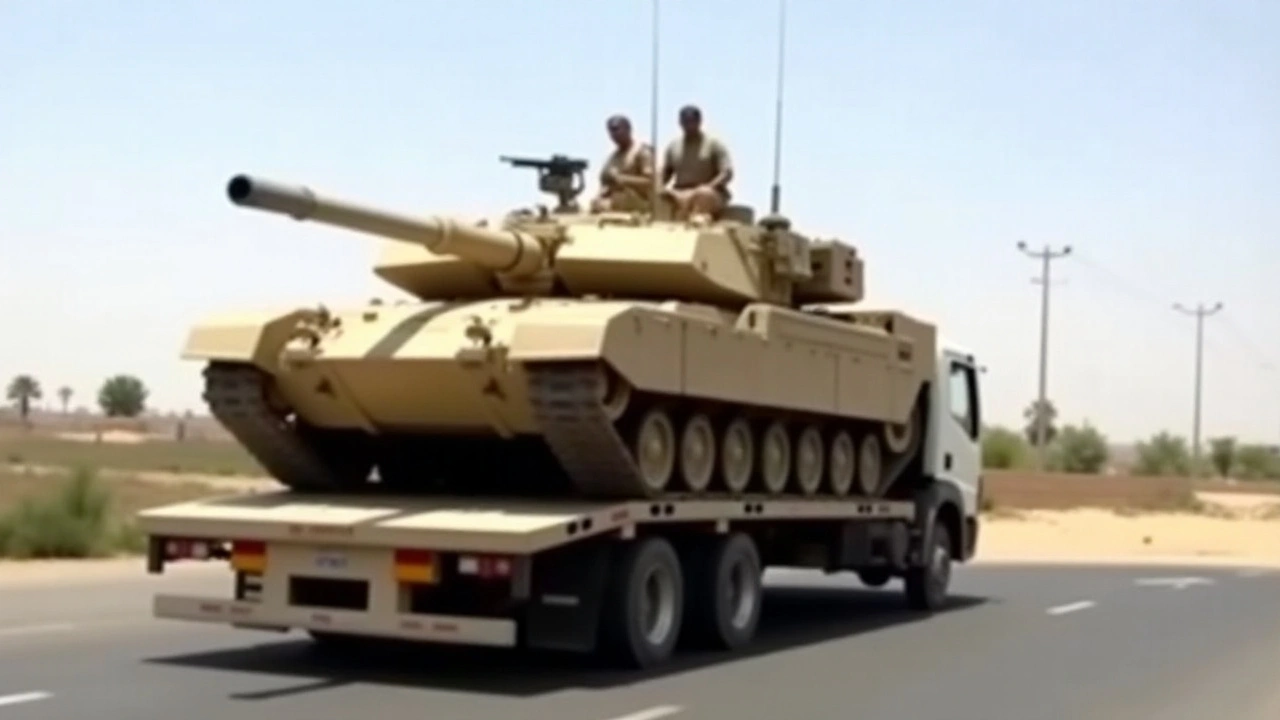- Home
- Syrian Rebel Attacks Intensify in Homs and Damascus Amid Escalating Conflict
Syrian Rebel Attacks Intensify in Homs and Damascus Amid Escalating Conflict

Understanding the Latest Surge of Violence in Syria
The relentless Syrian conflict has reached another crescendo as rebel forces initiate a strategic offensive targeting government-held regions in Homs and Damascus. These latest assaults have taken both the al-Waer district of Homs and the Jobar neighborhood of Damascus by storm, resulting in intense clashes with Syrian government forces. This escalation, unfolding from the early hours of December 7, 2024, exemplifies the prolonged and multifaceted nature of the war that has devastated Syria since 2011.
Rebel factions, prominently featuring Islamist groups, have employed a mixture of artillery bombardment and coordinated ground offensives. This tactical approach has underscored the rebels' sustained determination to challenge President Bashar al-Assad's grip on power. The ripple effects of these attacks have been far-reaching, leaving trails of destruction and mounting casualties in their wake. In response, the Syrian military has launched retaliatory air strikes and artillery barrages, intensifying the devastation experienced by both combatants and civilians.
The Broader Implications of Escalating Clashes
The ongoing conflict is not merely a local strife but a reflection of deeper geopolitical entanglements. The Syrian government has consistently alleged that these rebel factions receive backing from external patrons, with Turkey frequently accused of supporting anti-Assad rebels. This external involvement adds layers of complexity, ensuring that Syria remains a battleground for proxy conflicts influenced by both regional and international politics. As the rebels buttress their positions and expand their offensive operations, questions arise regarding the support infrastructure that sustains their prolonged resistance.
The recent surge in hostilities marks a significant period of volatility within the broader Syrian war, which has witnessed various ebbs and flows over the years. The government's concurrent successes in reclaiming towns and territories elsewhere testify to the dynamism of the conflict, hinting at a war that is far from static. Assad's forces have demonstrated military gains in regions previously dominated by rebel groups, shifting the balance of power intermittently. However, the escalation in Homs and Damascus underscores the ever-present challenge posed by these entrenched rebel entities.

The Human Cost of Continued Aggression
The humanitarian fallout from the intensified fighting remains staggering. The decade-long conflict has already culminated in hundreds of thousands of fatalities and driven millions from their homes. With the latest bout of violence, the plight of civilians trapped amid the crossfire is further exacerbated. Reports indicate significant damage to infrastructure, exacerbating the dire living conditions of those residing in affected neighborhoods.
Efforts to broker a peaceful resolution to the conflict have faltered repeatedly, leaving the Syrian population caught in a vicious cycle of hope and despair. Various attempts at international mediation have yet to produce a viable pathway toward lasting peace, impeded by the stark realities on the ground and the vested interests of external actors. This underscores an inherent challenge: negotiating peace in a context where allegiances are fragmented and deep-seated rivalries persist.
International Inaction and the Future of Syria
The inability of the international community to secure a durable peace agreement has not only prolonged the suffering but also contributed to the normalization of war as part of daily life for many Syrians. The conflict has laid bare the limitations of global diplomacy, highlighting the urgent need for renewed commitment to conflict resolution. The persistence of violence serves as a grim reminder of the consequences borne by civilians in the absence of decisive and concerted international efforts.
As we observe the latest developments in Syria, the question looms: how much longer will this cycle of violence and retribution last? With each new attack and counter-strike, the risks of wider regional destabilization grow. For many, the hope for normalcy remains elusive, overshadowed by the grim realities of a war-torn nation unable to break the chains of its past. These events serve as a sobering call to action for all those seeking peace and stability in a region ravaged by conflict.

Reflecting on a Decade of Strife
The Syrian conflict has characterized an era marked by instability and tragedy, defining the lives of its people. As the nation drifts further into chaos with each passing day, it's essential to remember the human stories etched into the annals of this ongoing war. Families displaced, lives lost, and futures forever altered—these are the true costs of the relentless hostilities that continue to ravage Syria.
While military maneuvers and geopolitical strategies dominate headlines, it's the human element that should captivate our empathy and drive us toward seeking solutions. With the latest rebel offensives capturing global attention, the landscape is primed for deeper introspection and a collective pledge to prioritize diplomatic avenues. Only when peace becomes the focal point can Syria hope to emerge from the shadows of its turbulent past.


Write a comment